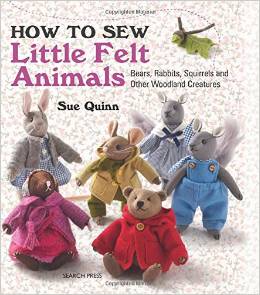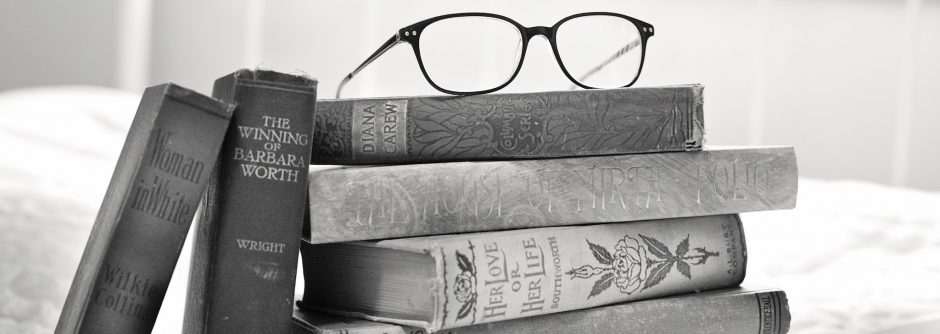How to Sew Little Felt Animals
By: Sue Quinn
Rating: 5 of 5
 “How to Sew Little Felt Animals” is a lovely book of patterns of animals and clothing. It is a book that I saw and pre-ordered months ago based solely on the pictures on the cover. When the book arrived, the reality of the projects is even better than the promise of the photographs.
“How to Sew Little Felt Animals” is a lovely book of patterns of animals and clothing. It is a book that I saw and pre-ordered months ago based solely on the pictures on the cover. When the book arrived, the reality of the projects is even better than the promise of the photographs.
Sue Quinn has written a wonderfully instructive book. The instructions are clear, the photographs well done, and she has given many suggestions for how to make sure your animals look and act properly once they are finished.
It should be noted that all of the patterns for both animals and clothing need to be enlarged. Each page gives the exact enlargement needed. The author suggests tracing the designs and working from those rather than take a chance on harming the book. I’ve done this process with other patterns before. While it is an additional step, it absolutely saves the integrity of the book for future use. When I make my final pattern page, I use freezer paper as it is easily saved and reused in the future.
The book includes instructions and patterns for the following animals: rabbits, squirrels, bear, moles, and mice. There are also instructions and patterns for the clothing which are shown on the cover and throughout the book. All of the clothing pieces can be made for any of the animals (with slight modifications to adjust for animals with and without tails, as applicable.)
The clothing pieces are varied and very sweet looking. They range from jackets, and dresses, to school boy’s outfits (including tie!) The author makes many suggestions as to types of fabric for the outfits, including scale, fabric content, and even makes suggestions for unusual sources for fabrics such as fine gauge knits.
She gives very detailed instructions (both written and visual) for how to create the gorgeous little animals. I had never thought to use a cotter pin with my little felt creatures but it makes absolute sense to do so to give them movable parts.
There are wonderful needlework instructions and she rightly suggests that you attempt to learn these stitches before making your animals. I have been a needlework designer for many years and I wholeheartedly agree. If some of the finer details are not done top notch, it will be harder to enjoy the finished projects. The stitches involved are not difficult and should only take a few hours to fully master all of them.
So many felt pattern books are focused on females that it is a real joy to see that Ms. Quinn has made gender neutral animals and included clothing for both boys and girls. While she notes that the animals projects are not intended for young children (probably not under three due to small pieces), I think that these can be made and given to older children to play with – both boys and girls.
The quality of the book and instructions are obvious in the sample that you can look through here on Amazon. The entire book is up to the standard shown. I have already begun my first project (I love the the baby teddy and must do him first) and I am sure that I will be making many more of these delightful animals for my house and to give as gifts to loved ones. I have only just started and I am already hoping that Ms. Quinn has follow-on books with other animals (maybe farmyard?) in the works for the future. The one thing I could have wished for that was not included is a list of online sources for some of the materials she recommends. These are fairly easily found with internet searches for anyone who does not already have vendor sources they buy materials from.
I highly recommend the book. It is entirely appropriate for intermediate and above. A beginner can also work these projects, just be sure to take your time and work each step as directed. Cutting corners or trying to speed ahead can easily result in miss-steps that can make your projects turn out less than what you wished for.
 “How to Sew Little Felt Animals” is a lovely book of patterns of animals and clothing. It is a book that I saw and pre-ordered months ago based solely on the pictures on the cover. When the book arrived, the reality of the projects is even better than the promise of the photographs.
“How to Sew Little Felt Animals” is a lovely book of patterns of animals and clothing. It is a book that I saw and pre-ordered months ago based solely on the pictures on the cover. When the book arrived, the reality of the projects is even better than the promise of the photographs.